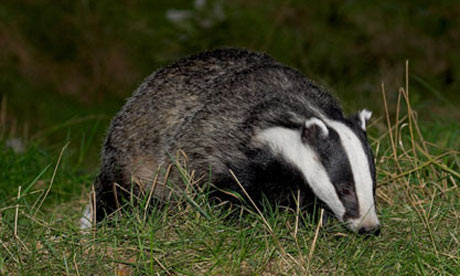
From the kindly old Badger of The Wind in the Willows to the murderous Tommy Brock from Beatrix Potter, the proliferation of literary depictions of badgers through the ages has dangerously coloured the debate around whether to cull wild badgers, according to new research.
Dr Angela Cassidy, a fellow with the Rural Economy and Land Use Programme, says the UK's conflicted attitude to badgers is "rooted in history", with literary representations of badgers dating back to an Anglo-Saxon poem from the 11th century, showing a noble creature defending its family from attack. The deep-rooted place the creatures have in our past has influenced the "violent" debate around whether or not badgers should be culled to control the spread of bovine tuberculosis, she believes.
"Old Brock" is often shown as a heroic creature, as in Kenneth Grahame's children's novel, with human characteristics such as loyalty, bravery and strength, writes Cassidy in her paper Vermin, Victims and Disease, which has just been published in the journal Sociologia Ruralis. They are also, she said, seen as "mysterious, nocturnal creatures that are symbolic of the natural world and British countryside".
The poet John Clare wrote about "the badger grunting on his woodland track / With shaggy hide and sharp nose scrowed with black" in his 19th-century sonnets about badger baiting, a topic also covered by Edward Thomas in his 1916 poem The Combe, which describes the badger as the "most ancient Briton of English beasts". TH White included a badger in his Arthurian novel The Sword and the Stone, and a more martial version of the creature can be seen in CS Lewis's Prince Caspian and Brian Jacques's Redwall series.
Cassidy says that the "bad" badger is also evident in literature, although less common, with Potter's The Tale of Mr Tod telling of the badger Tommy Brock, who kidnaps a nest of baby rabbits and keeps them in his oven for his dinner.
"From the early 20th century depictions of the 'good badger' became dominant, but more recently the verminous and diseased 'bad badger' has resurfaced. It is noticeable how the two sides have harnessed the language of war to bolster their arguments, with quite violent rhetoric being used in an increasingly polarised public debate," she said. "Perhaps if we could recognise that the current bovine tuberculosis debate is actually partly about human relationships with badgers, and that both the 'good' and 'bad' versions of the badger are exaggerated, this could help move policymaking forwards."

